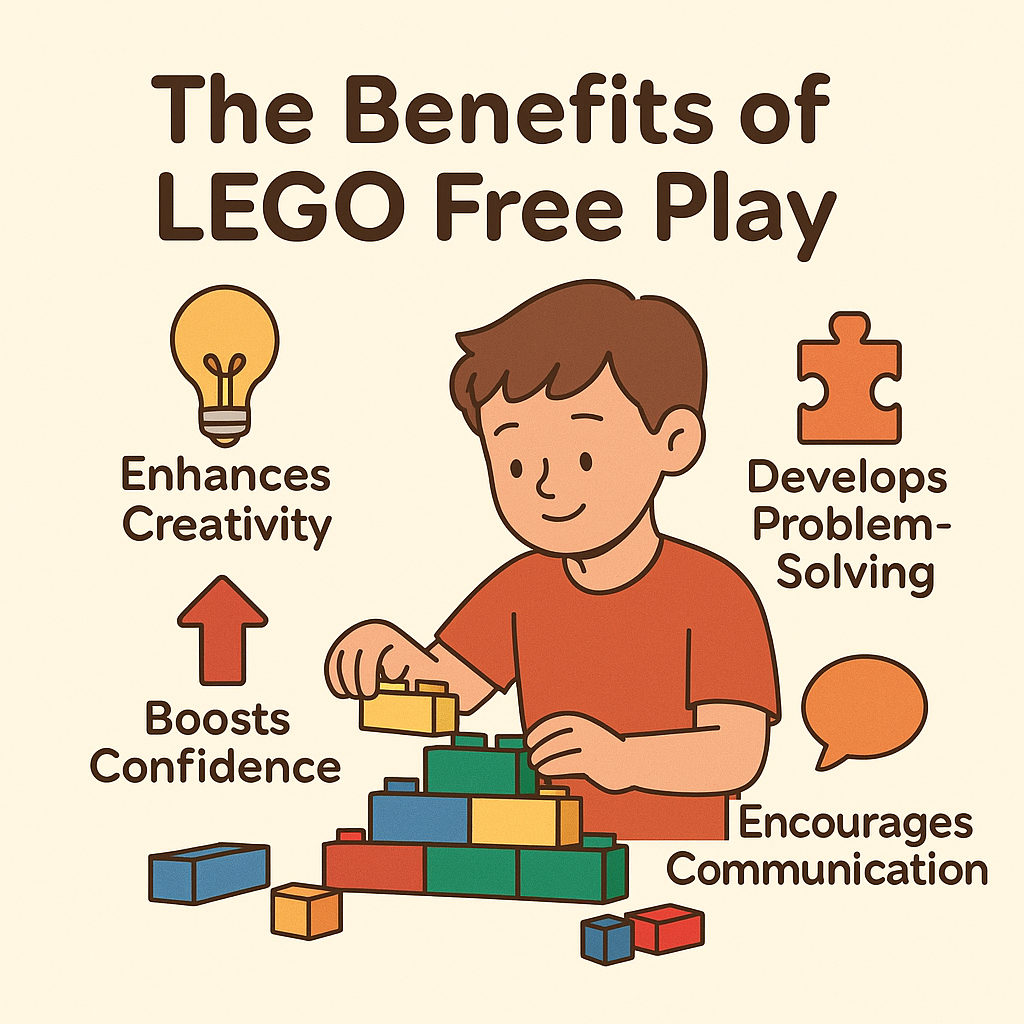
The Power of LEGO Free Play: Building More Than Just Bricks
Share
LEGO bricks aren’t just toys—they’re tools for imagination, growth, and learning. While many children enjoy following the structured instructions in official LEGO sets, even greater developmental benefits come when those instructions are tossed aside, and children are left to build freely. This kind of open-ended LEGO play, known as freeform construction, allows kids to explore ideas without constraints and fosters vital life skills.
🎨 1. Enhances Creativity and Imagination
Free play invites divergent thinking, where there’s no single right answer. Children must invent their own goals and methods. According to a study published in Creativity Research Journal (Russ & Wallace, 2013), unstructured toy play leads to higher scores in creativity tests and storytelling abilities.
When a child builds a spaceship that’s also a bakery, they’re not just stacking bricks—they’re building worlds.
🧩 2. Develops Critical Thinking and Problem-Solving
Unstructured LEGO building involves testing ideas, predicting outcomes, and refining designs. These are essential cognitive skills. Research from Developmental Psychology (Zhou & Brown, 2015) indicates that constructive play improves executive functions like planning, task switching, and working memory.
Each trial-and-error decision teaches logical reasoning and resilience.
💬 3. Improves Communication and Social Skills
When children engage in collaborative LEGO play, they must explain their ideas, ask for parts, and negotiate design choices. A 2017 study by Ramani et al. in Early Childhood Research Quarterly found that cooperative block play enhances verbal communication and conflict resolution among peers.
These social interactions are low-pressure and authentic, making them ideal for emotional development.
📈 4. Boosts Confidence and Self-Esteem
Completing a freeform creation gives children a strong sense of ownership and accomplishment. Unlike pre-designed builds, free play celebrates originality. As children build their ideas and receive positive feedback, they internalize a sense of creative identity.
Psychologist Edward Deci’s Self-Determination Theory supports this—when kids choose their own goals, they stay more motivated and gain confidence through autonomy.
🧠 5. Supports STEM Learning in a Playful Way
LEGO bricks naturally lend themselves to STEM learning. From architectural symmetry to mechanical problem-solving, children encounter real-world principles while playing. According to The International Journal of STEM Education (2019), hands-on construction experiences support spatial awareness, sequencing, and an intuitive understanding of math and physics concepts.
LEGO free play prepares children for future academic success, without them even realizing it.
🌈 Final Thoughts
Freeform LEGO play is far more than idle fun—it’s an exercise in imagination, a test of perseverance, and a lab for life skills. When children build without boundaries, they explore, grow, and thrive. Whether it’s solo creation or shared invention, a handful of bricks can shape much more than toys—they shape minds.
So next time your child starts building without the booklet, let them lead the way. Their creativity is constructing more than you can see.
